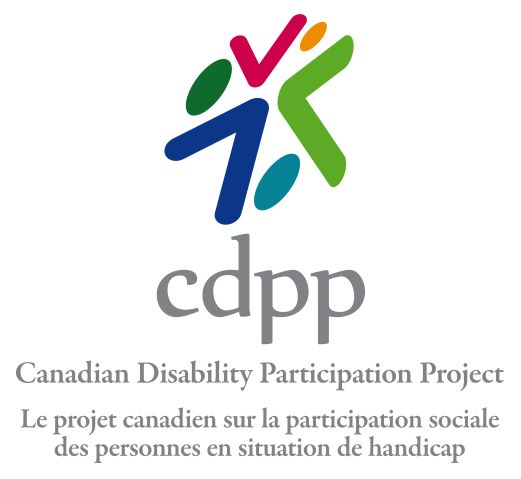In 2006, the United Nations endorsed the Convention on the Rights of Persons with Disabilities (CPRD) — a landmark convention that protects the right to participation in variety of social domains, including sport activities, venues, and services.
The CRPD has been ratified by Canada and 176 other countries around the world. Nonetheless, rates of sport participation among persons with a disability are low. Although sport participation data for Canadians with a disability are limited (i.e., we don’t have an accurate estimate of sport participation rates for this population), data from other countries are more robust. For example, Sport England (2019) suggests that one quarter of the British population with a disability are active in sport — only half the rate of England’s able-bodied population.
As access to and awareness of sport opportunities for people with a disability continue to rise, definitions of sport participation have also begun to shift. In addition to the quantity of sport participation (which includes how often an individual engages in sport, the duration of each practice or competition, and the length of the season), researchers and practitioners alike are increasingly focused on the quality of sport participation – participants’ subjective perceptions that their participation in sport has been satisfying, enjoyable, and generates personally meaningful outcomes (Evans et al., 2018).
The Quality Parasport Participation Framework
While accessible sport activities, venues, and services are necessary for people of all abilities to participate in sport, accessibility does not guarantee positive sport experiences. The creation of positive experiences requires consideration of a range of other factors, including (but not limited to) feelings of belonging, choice, success and challenge.
By ensuring that people with a disability are exposed to positive sport experiences, the chance that they will continue to participate in sport, and thus enjoy the potential benefits, is likely to improve (Caron, Martin Ginis, Rocchi, & Sweet, 2019; Martin, 2006). Consequently, quality participation is crucial for long-term development in sport and physical activity more generally.

With this in mind, researchers from the Canadian Disability Participation Project (CDPP) — a SSHRC-funded alliance of university, public, private and government sector partners working together to enhance community participation among Canadians with physical disabilities —synthesized existing literature and sought input from stakeholders in the disability sport sector to generate an evidence-informed framework of optimal parasport participation.
Building Blocks
Quality participation occurs as the result of repeated exposure to positive experiences, and evidence from the perspectives of people with disabilities suggests that positive experiences are constructed from six key “building blocks” (Martin Ginis, Evans, Mortenson, & Noreau, 2017):
- Autonomy — having independence, choice, or control;
- Belonging — a sense of belonging to a group;
- Challenge — feeling appropriately challenged;
- Engagement — feeling motivated, focused, or involved in an activity;
- Mastery — a sense of accomplishment; and
- Meaning — a sense of responsibility to oneself or others.
These building blocks form the core of the Quality Parasport Participation Framework, which outlines 25 evidence-informed strategies to foster positive experiences, and in turn, quality participation in disability sport (Evans et al., 2018). Sport programmers can select strategies that target one or more of the six building blocks, thus creating a foundation from which positive experiences can be built. These “foundational strategies” fall into three categories:
- The physical environment – e.g. Ensuring that accessible washrooms and changerooms are available, entrances and exits are wide enough to accommodate wheelchairs and other mobility aids, and/or that lighting and signage (large print or braille) is adequate for individuals with visual impairments.
- The social environment – e.g. Participants perceive that others (e.g. program volunteers, coaches, spectators) have positive attitudes towards disability and parasport. This can be achieved through volunteer and/or coach training, as well as disability awareness campaigns, such as the Government of Canada’s National AccessAbility Week.
- Program characteristics – e.g. Modifying the level of challenge, types of activities and equipment meet the needs of individual athletes.
Notably, the building blocks are highly individualized, meaning that the combination of building blocks that contribute to a positive experience will be different from person to person. As such, foundational strategies should be selected in line with participants’ needs or the goals of the program more broadly.
Developing the Framework
The Quality Parasport Participation Framework was developed through a rigorous, multi-step process (see Evans et al., 2018 for complete details). The first step involved a review of the participation literature across disability settings (e.g., rehabilitation), through which the initial “building blocks” of positive experiences were identified (Martin Ginis et al., 2017). Subsequently, a systematic review of qualitative (i.e., narrative-based) and quantitative (i.e., numbers-based) research was performed to identify aspects of adapted physical activity programs that are conducive to facilitating the six building blocks (Shirazipour et al., in press). In addition, original qualitative studies were carried out with the goal of understanding the perspectives of individuals with physical disabilities regarding quality participation and the six building blocks (Allan, Smith, Côté, Martin Ginis, & Latimer-Cheung, 2018; Shirazipour et al., 2017), as well as the real-world strategies employed by organizations that deliver adapted physical activity experiences to enhance program quality (Shirazipour, Aiken, & Latimer-Cheung, 2018). Finally, input from stakeholders (CDPP researchers and community partners; external researchers and sports administrators; disability sport athletes, coaches, parents) was gathered through multiple online surveys and in-person and online consultations (Evans et al., 2018). The research team then integrated stakeholder feedback into the framework.
Resources
For more information about the Quality Parasport Participation Framework — including a complete list of the strategies that can be used to target each building block and the evidence to support them — check out the follow resources: